When you’re preparing for the worst, you can sometimes forget to prepare for everyday problems. Your food stockpile is precious, and its two greatest enemies are also common enemies of your home.
Pests and the moisture that attracts them are those two greatest enemies. Wherever you’re storing your food, it’s likely darker, damper, and quieter than any other part of your home. These three conditions are perfect for everyday pests, and if you don’t take the necessary precautions, you’re providing them with a massive food source as well.
Luckily, there are steps you can take to keep your food stores safe and fresh until you need them. Here’s what you’ll need to do to keep your food stockpile safe.
#1. Seal the Room
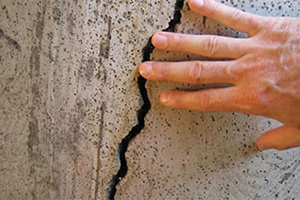 Where are you keeping your stockpile? Is there a bunch of cracks and holes that pests can get through? Your first mission will be to patch everything up or find a better-sealed place to keep your food.
Where are you keeping your stockpile? Is there a bunch of cracks and holes that pests can get through? Your first mission will be to patch everything up or find a better-sealed place to keep your food.
According to a professional basement contractor “Insects can find their way inside through any crack, gap or hole in the exterior of your house. Spend an afternoon identifying and sealing all possible points of entry to your basement to reduce the number of bugs that get in.”
The same concept applies to any room in your house that doesn’t get a lot of foot traffic. Every step after this is minor compared to properly sealing the room. The best offense is a good defense.
Related: 10 Ingenious Ways to Keep Moths Away From Your Grains
#2. Waterproof the Walls
Once the room is sealed, you’ll need to remove as many sources of water that pests can access as possible. If they don’t have a water source, they won’t be able to survive.
Make sure none of your pipes are leaking, and plug your drains when they’re not being used. Pests can make their way through the drains and into the room.
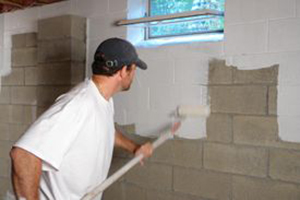
Your pipes and walls should be insulated as well. This will cut down on condensation and humidity, removing another potential water source and helping to keep your food fresher longer.
If your food stores are underground, invest in some waterproof paint. Apply the paint directly on the walls. If the walls are already painted or otherwise covered, you’ll need to remove the existing layer to get full protection.
If you’re still having problems with moisture, invest in a dehumidifier. The drier and colder it is in the room, the longer your food will last.
#3. Set Traps
I know we said the best offense is a good defense, but that doesn’t mean you should stop playing offense. If you have issues with particular pests, set fresh traps and check them regularly.
 At the very least, you’ll be able to figure out exactly what kind of pest you’re dealing with so you can ask for help from someone who knows how to get rid of the infestation. Some pests will claw, chew, and squirm their way in no matter what you do. It never hurts to ask for help.
At the very least, you’ll be able to figure out exactly what kind of pest you’re dealing with so you can ask for help from someone who knows how to get rid of the infestation. Some pests will claw, chew, and squirm their way in no matter what you do. It never hurts to ask for help.
Nature’s professional rodent catcher can also be a great helper. If you’re having mouse or rat problems, make your storeroom a haven for your cat(s). If you aren’t already a cat person, you will become one when they start bringing you “gifts”. Don’t forget to store plenty of food for your natural predator!
#4. Repackage Food in Air-Tight Containers
Moisture and pests are the top two threats to your food stores, and air is number three. Air-tight containers keep your food from having nasty reactions with Oxygen and other elements in the air.
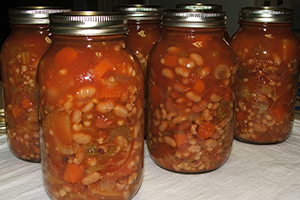 They also help to protect against the top two threats, especially a solid, glass jar. Plastic can be chewed through if pests are desperate, but nothing is going to chew or claw through glass. Just make sure you store them somewhere that they can’t be pushed. The only way pests will get in is if they shatter them, and only large pests will be able to do that.
They also help to protect against the top two threats, especially a solid, glass jar. Plastic can be chewed through if pests are desperate, but nothing is going to chew or claw through glass. Just make sure you store them somewhere that they can’t be pushed. The only way pests will get in is if they shatter them, and only large pests will be able to do that.
Canned food is even better. Nothing will be better protected and last longer than a reliable can of soup, beans, fruits, or veggies. However, you can’t can everything.
Plastic buckets with gamma seals are best for storing large amounts of perishable foods. You’ll need to empty the food from its original container and keep the bucket sealed for it to last long enough for an emergency.
#5. Refrigerate and Freeze As Much As You Can
As long as there is power available, it’s best to freeze and refrigerate whatever you can. If there is an emergency that leaves you without power, this won’t be of much help.
However, refrigerators and freezers are also pest-proof. If you are left without power, you will at least have that extra level of protection in place.
What steps are you taking to protect your stockpile of food? Let us know in the comments below!
You may also like:
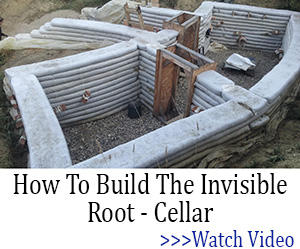 If I Could Only Stockpile 10 Foods
If I Could Only Stockpile 10 Foods
5 Ingenious Ways To Refrigerate Your Food Without Electricity (Video)

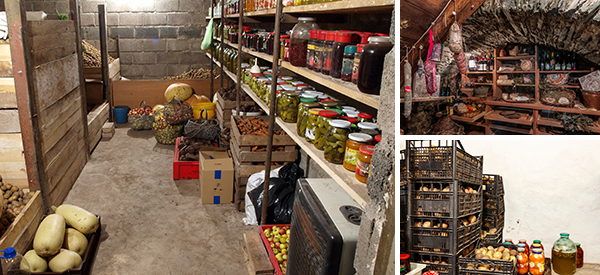













I have found that I can extend the storage time for rice, pasta and beans by vacuum sealing them. I double-bag the items, to make sure the seal holds.
Great idea JanH. I do the same here. we don’t eat a lot of pasta but beans and rice are favorites. I go a step further by sealing them in quantities that we normally use or would want to use for trade, like 1 cup pouches. I’ve found that 1 cup of rice can feed 3 people with some left over. That extra goes into the dogs bowls or is used the next day for breakfast. I like your double bagging idea. I had thought of that but never did it. Thanks for the reminder.
I store foodstuffs in 2-quart Best Foods mayonnaise jars. Works for me. Airtight, insect proof, don’t leak and float in a flood. However, the plastic melts and gets stuck to everything in a wild fire which is probably our biggest concern where we are.
Mylar Bags is what I store my food in, with oxygen removers for the ones that need them.
I used mylar bags and got bugs in my rice going to dry can from now on
I’ m a “” PRESERVER “” and a “FERMENTER ! ” And a stage 4 NHL ( the only CURE = GOD-NATURE and a “”TUNGSTEN”” STRONG-FOCUSED MIND!!”” Only nature heals….anything else is “” POISON !!”” I oven dry : fruit-vegetables-nuts-mushrooms (wild…i do a lot of foraging!!!!!!!!!) etc. etc. etc. I store all…in glass jars with a parchment paper piece that protects any dried stuff from the inside of the lid top.Tonight i m having for dinner – a 1 ltr. jar of dried kale (2016).One word of caution ” anything you dry,Must be done OVEN or DEHYDRATOR….. At a MAx temperature of 135F’, I personally never go over 100F,HI TEMPERATURE DESTROYS NUTRIENS.god bless,Mario (Canada)
Mario: For eons food was dried outdoors in the sun without harmful effects on humans. That method of drying food is time tested and long predates dehydrators or ovens or any such modern devices. The Japanese have been air drying persimmons outdoors in the sun for over a thousand years that they have records of. They have been drying kelp, octopus and fish the same way. They prefer air dried rice. It isn’t unusual, even today to drive past a farm and see sheaves of rice hanging on rails drying before threshing and storing.
In addition, for all the climate henny-pennies, air drying is more climatically correct, not needing any hydrocarbons, but just using the natural heat of the sun. No big fans to kill birds, no glaring solar collectors that use rare earth materials that the Chinese mine using prisoners, just good clean solar heat does just fine. About three days in the sun dries my persimmons to the consistency I like. I don’t like them dried to a brittle piece of tasteless nothing, although that does make them last a whole lot longer.
I understand that this week may not be the best week of the year for drying fruit outdoors in Illinois. It was a chilly 60° on my back patio this morning, but by the time the sun was over the roof it was warm enough to put the persimmons out on the patio to dry.
Yes, air drying is a really valuable technique. It’s been used for just about everything. European fishermen used to catch cod on the Grand Banks, go ashore in Newfoundland to air dry it, then ship it all the way across the Atlantic. The South African equivalent of jerky, biltong, is air dried. As long as you can keep pests off it – and mosquito net or repurposed door screens do a great job – you can preserve a whole range of foods at basically zero energy cost.
Many of the home supply mail order companies such as Walter Drake and such companies sell collapsible netting. They are about 18″ square and usually come in sets of three. They are very cheap. I use them for my persimmon drying in the yard. I use 3/8″ wire cookie cooling sheets and cover them with the collapsible netting to keep insects from eating my persimmons.
They are billed as picnic supplies. If I remembers what the catalog name for them was, I would post it, but I generally just look through the catalog for a picture of the item. During non-drying season I store them in a mailing tube.
Thanks for this suggestion about the food tents.
I found what you mentioned at this link:
https://www.wdrake.com/buy-food-tents-set-of-3-330123
Drying food in the sun would be so much cheaper than running a dehydrator for hours.
In our case it is darker & quieter; but, neither damp nor having excessive temperature range throughout the year.
If we look at the history of the basement, most started out as a combination storm shelter and root cellar, back when people heated exclusively with wood or coal. The first coal fired convection coal burning furnaces came out in 1919 and were common by the mid 1930’s; but, these huge devices were often dirty monsters, making that basement the perfect place to put them. Other mechanical devices like well pumps & water heaters often accompanied these furnaces into the basement.
In the modern era, this equipment has gotten smaller and more efficient, and often no longer gets hidden in the basement, so basements are now converted to living space, with all of the problems described in this article.
In our case, our basement takes up only about 300 ft2, sitting under our summer kitchen and bathroom at the back of the house, and like old basements, contains only the well pump, water softener, sump pump, and water heater. We do however have 4 bedrooms, with 2 downstairs and 2 upstairs and with the children all gone, one of those upstairs bedrooms us where we store our long term food supply.
This makes storage an easier thing than trying to protect against the hazards of a wet basement. We also store food in the kitchen and the summer kitchen area at the back of the house, just off the kitchen.
#4. Repackage Food in Air-Tight Containers
We use a FoodSaver to package or repackage many things; but, other items can be stored in Mylar bags with an O2 absorber, or in a 5 gallon bucket with a Gamma Seal id and some desiccant. We save desiccant from pill bottles and electronics; but, you can purchase it from most craft stores, sold for drying flowers.
#5. Refrigerate and Freeze As Much As You Can
With two refrigerators and a chest freezer, we have a lot of frozen goods; but, having backup power to keep these running should be another priority.
Another thing to keep in mind when tucking foods away from moisture, is to keep a good inventory, since one they are vacuum sealed, double wrapped, frozen, and otherwise protected, food can tend to get lost in the packaging.
We have 6 chest freezers in the 7-9cf range, plus two uprights we use for flash freezing when we butcher pigs or steer, then they are cut off and held for spares. Also do a lot of canning, using an old National brand canner (holds 7 quarts) and an All American that holds 19-20 quarts.
That cat looks about as worthless as the three I have taking up space around the house. They do nothing but try to sneak inside and beg to be fed. A cat just sitting there looking at the mouse now that’s funny. Should have had a pic of a cat with the mouse in his mouth or chewing the head off or something. Lol. I guess if you want cats to keep rodent population down don’t raise them to be pets. Just leave some food out and let them be. Ofcourse spade and neuter them or they will mass produce
Due to the position of the cat’s eyes; it’s looking OVER the mouse, and not even looking at the mouse, which suggests that this pic is Photo-shopped!!!
I vacuum seal rice and pasta and beans in pint glass ball jars and keep the plastic shrink wrap and card cases that they come in for storage. I also use 5 gal. buckets with at good rubber seal in the lids for just about everything else. I put cans in them, or mylar sealed milk powder, Military MRE’s, toilet paper,you name it, it goes in. They aren’t completely rodent proof, but if we have to leave we can take a lot of our food with us, in a short amount of time..